The lights of some Australian cities can be seen from as far as 50 miles. These beacons must not guide enemy aircraft…in the state of emergency the civilian population must not allow one ray of light to destroy the complete blackout…Put out that light!
Blackout: ABC of A.R.P (Air Raid Precautions) 1
On 3 September 1939 Prime Minister Robert Menzies made the announcement that Australians had grimly anticipated: Australia had joined Great Britain in declaring war on Germany.2 The losses of the Great War were still fresh as Australian soldiers again battled enemy forces overseas, but for those on the home front the war was initially a remote concept. This all changed in December 1941 when the Japanese bombed Pearl Harbour, and their forces advanced through South-East Asia. In February 1942 Singapore fell to Japan, and the war entered the Pacific arena, putting the Australian mainland under threat of invasion. The war was no longer ‘over there’ but on Australia’s doorstep. These fears became reality with the bombing of Darwin on February 19, which caused the deaths of 243 people.
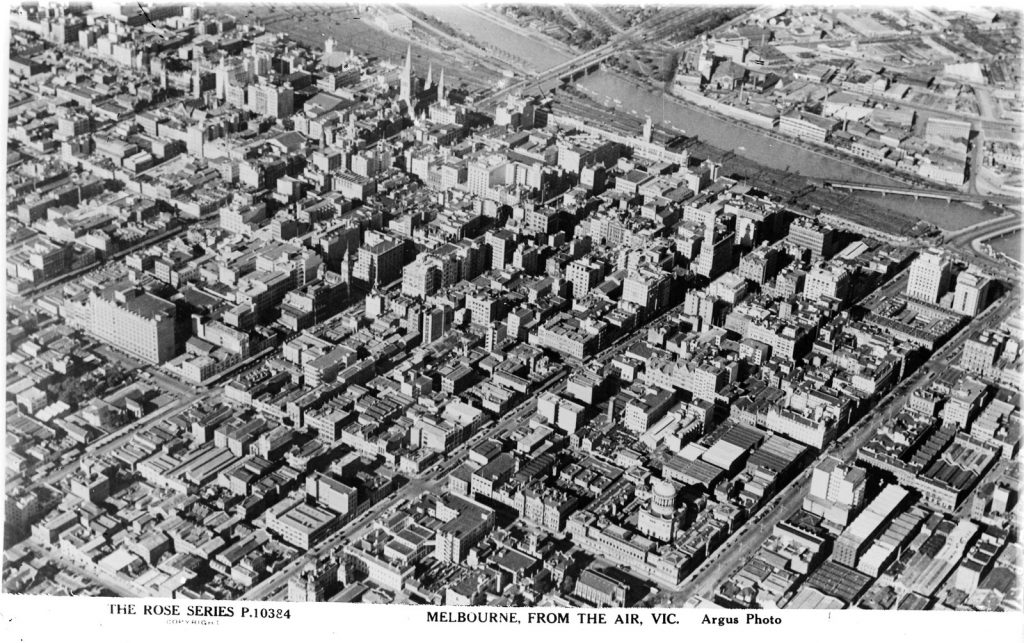
Melbourne, with its deep-water port, and nationally significant munitions and airport construction factories, was feared to be a target for enemy air attacks.3 Prime Minister Menzies advised state premiers that in the event of an attack by air, seventy tons of bombs could be dropped within twenty-hours.4 In December 1941 a brownout was enforced, dimming the lights of Melbourne and its suburbs.5
Only one street lamp in four is lighted, and these are shaded as to throw a dim light of not more than 40 feet in diameter. Electric trains have only two-thirds of each carriage lighted, while city and suburban stations have their ordinary lighting dimmed at least 50 per cent. Headlights on most Melbourne trams have been fitted with hoods…
“Melbourne’s Brown-Out”, The Advertiser (Adelaide, SA), 22 January, 1942, p.8


Life on the homefront was altered in both dramatic and benign ways. Shop owners and civilians were instructed to cover their windows at dusk, and shops were forced to close at 6pm. The Melbourne Public Library was no exception, and in addition to the early closing the windows of the domed reading room were covered, with one regular visitor complaining: ‘The large reading room is now in the language of Milton, “a dungeon horrible on all sides round” with “no light but rather darkness visible”‘.6
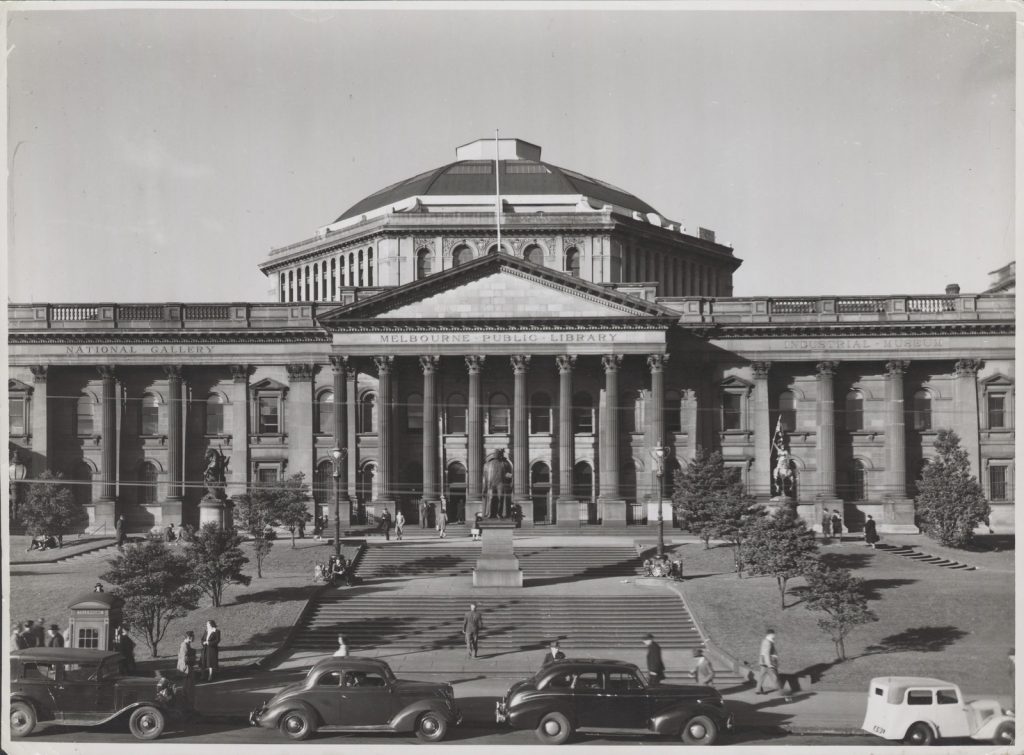
The darkened streets posed unique challenges. The Argus wryly observed ‘Never, probably, were there so many people going about Melbourne with broken arms and sprained ankles.’7 Traffic accidents multiplied, and public transport delays were frequent. Dimmed lighting in trams caused consternation for passengers wanting to read the newspaper on their daily commute. 8 Victorian railways removed the names of all stations in case of invasion, and passengers had to count stations to make sure they got off at the right stop.9 The Argus described an unusually quiet lead-up to Christmas in the city, giving the first real pre-sentiments to war: “Streets usually crowded with Friday night shoppers showed no Neon signs, no brilliant illumination of Christmas goods”. 10
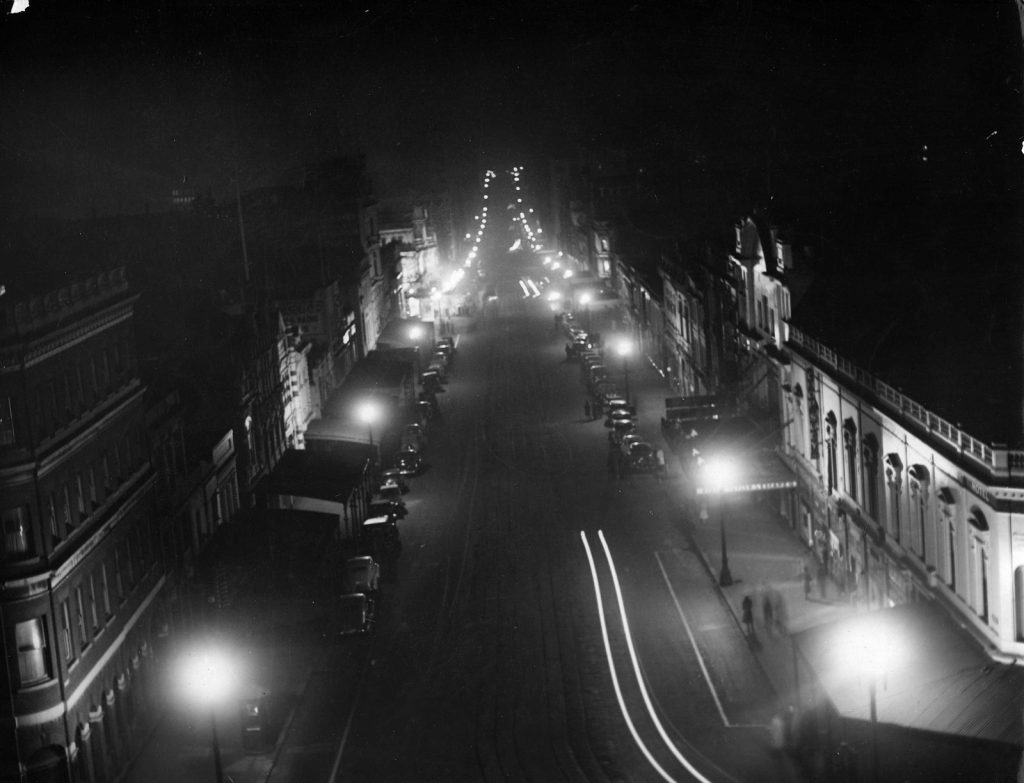
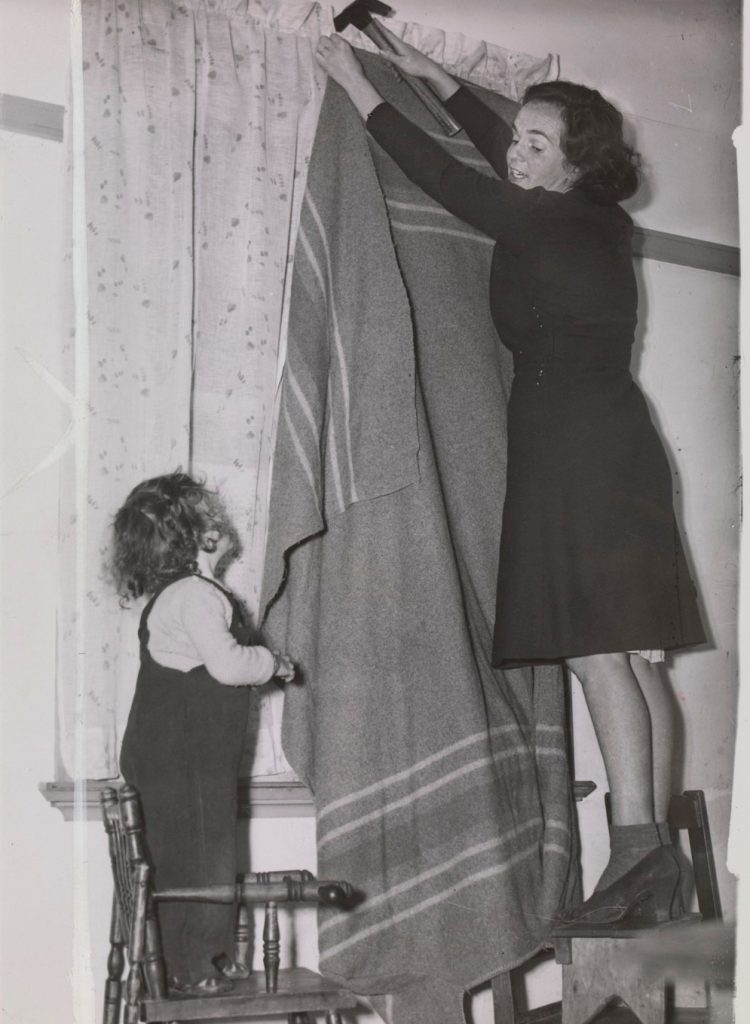
Civil defence
Victorians were mobilised as part of civil defence preparations all over the state. Over 60,000 people volunteered as auxiliary police officers or for Air Raid Precautions (ARP) activities.11 Preparations included air raid training demonstrations and emergency drills, sandbagging of prominent buildings, and the construction of communal bomb shelters in the city and suburbs, as well as more bespoke backyard trenches. The Library holds thousands of photographs that depict what life was like during these tumultuous years – many of these are part of the Argus Newspaper Collection of War Photographs.


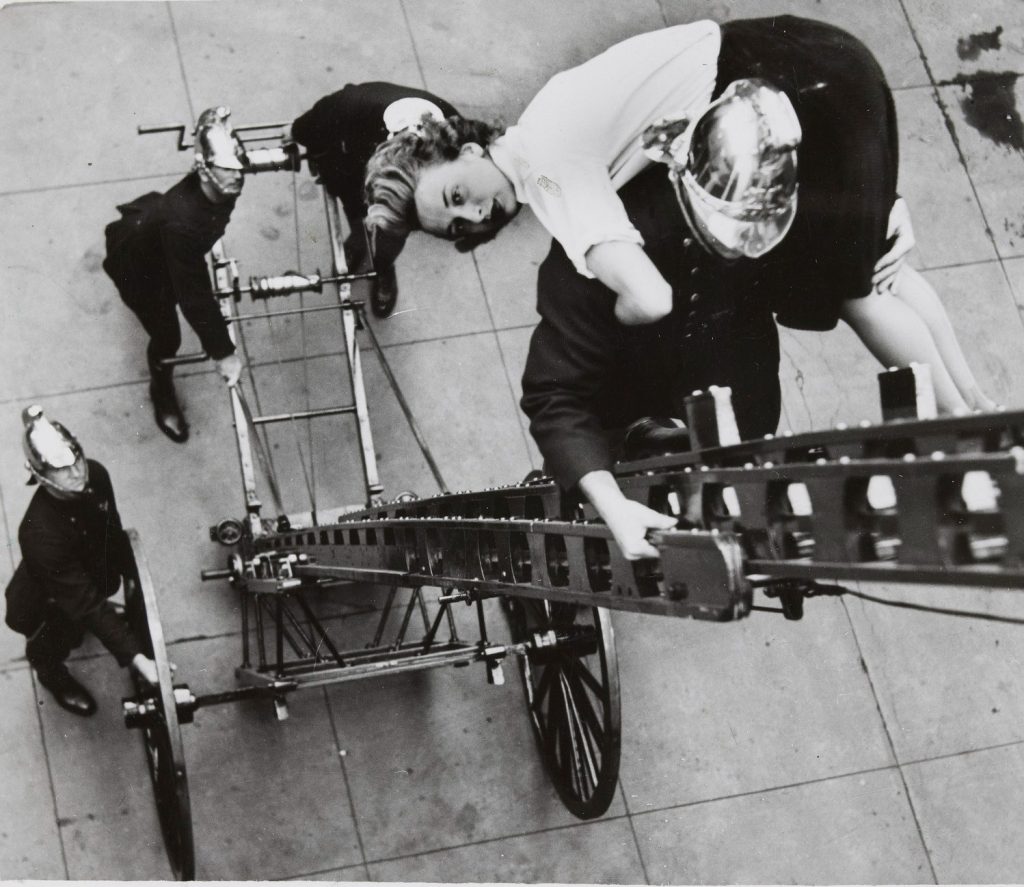
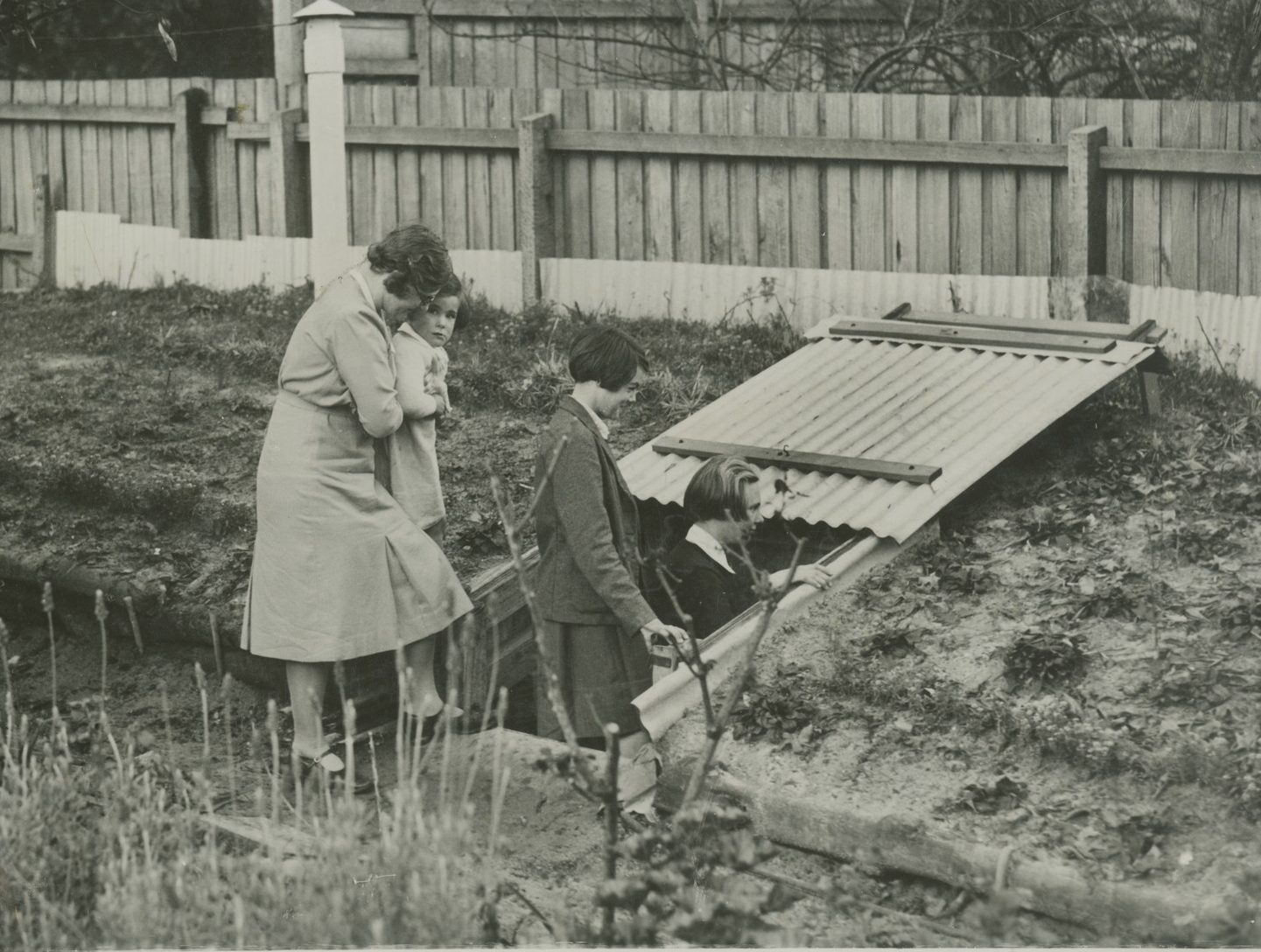
The war years brought austerity in the form of food shortages and long working-hours, but they also offered excitement and new opportunities, especially for women who were drawn into the paid workforce for the first time, or who volunteered for the war effort. Despite the restrictions, many were to later recall the war years as a time of great social mobility and independence.12
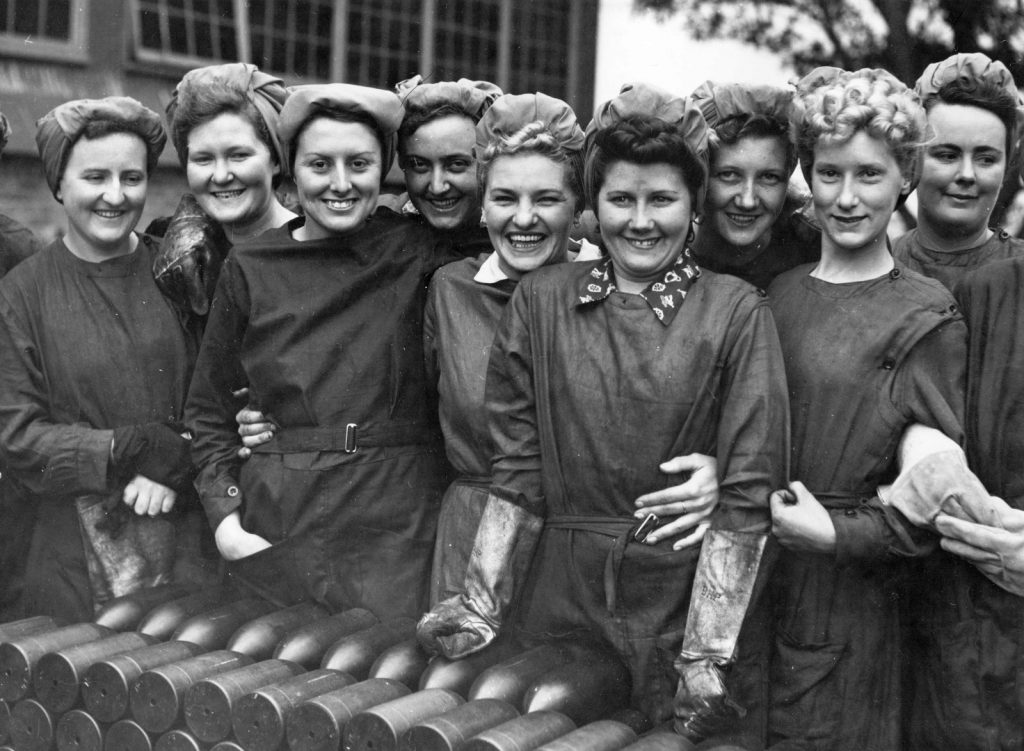
Here come the Americans
Though the lights were out, Melbourne was a riot of activity and its night scene was teeming with life. By April 1942, some 30,000 American service personnel were stationed in Melbourne, under the leadership of General Douglas MacArthur.13 Many of the US troops were stationed at Camp Pell, in Royal Park. A visitor from Canberra noted:
Melbourne is full of soldiers, most of them American, it is full of men in uniforms, military cars and lorries painted khaki… Crowds of people swarm in the main streets, trams are full to overflowing…
Kate Darian-Smith, On the home front: Melbourne in wartime, 1939-1945, p.13.
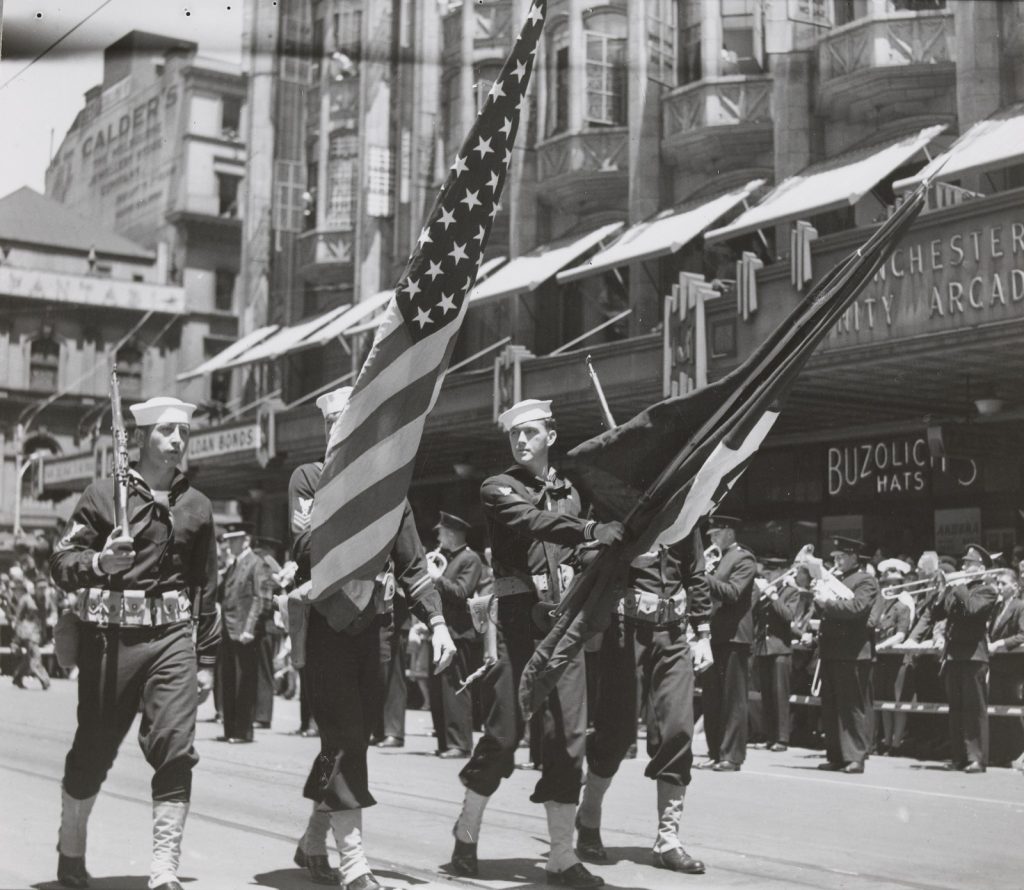
H2000.200/1116

In the half-light, pubs, cinemas and cafes did a roaring trade. Dance halls were one of the few opportunities for men and women to mingle without formal introduction, and a distinctive Melbourne jazz emerged in the live music scene, with artists like the Bell Brothers Band and Ade Monsborough honing their sound.14
But behind the revelry a danger was lurking in the dimly lit streets.
The brownout murders
On the 3rd of May 1942, the body of Ivy Violet McLeod was found in the doorway of a shop next to the Bleak House Hotel in Albert Park. Less than a week later another woman – Pauline Thompson – was found outside a city boarding house after a night out. On May 18, a third victim – Gladys Hosking – was found in Royal Park. All three women had been beaten and strangled.
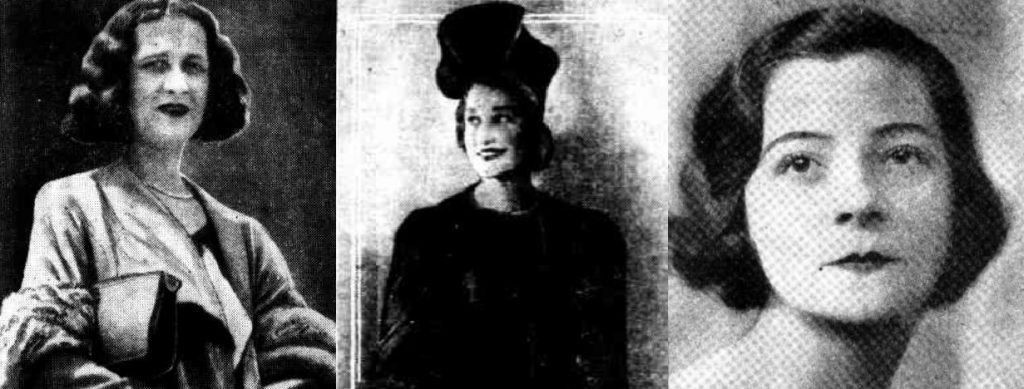
The murders – occurring across a 15 day period – caused considerable panic in the community. A media frenzy ensued, with the killer dubbed the Brownout Strangler. After the murder of Gladys Hosking, several women came forward with accounts of being harassed by an American soldier.15 Police investigations and witness testimony led police to an American serviceman who was stationed at Camp Pell — 24-year-old Private Edward (Eddie) Leonski.
Leonski was known as somewhat of a larrikin who enjoyed socialising, but his acquaintances noted a darker side, a Jekyll and Hyde personality that manifested in heavy drinking and erratic anti-social behaviour.16 He confessed, and was arrested and charged with the murders. As an American citizen, Leonksi was tried before a United States military court-martial.
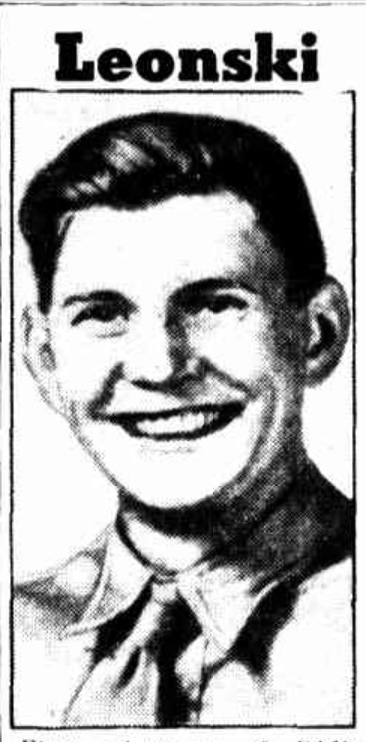
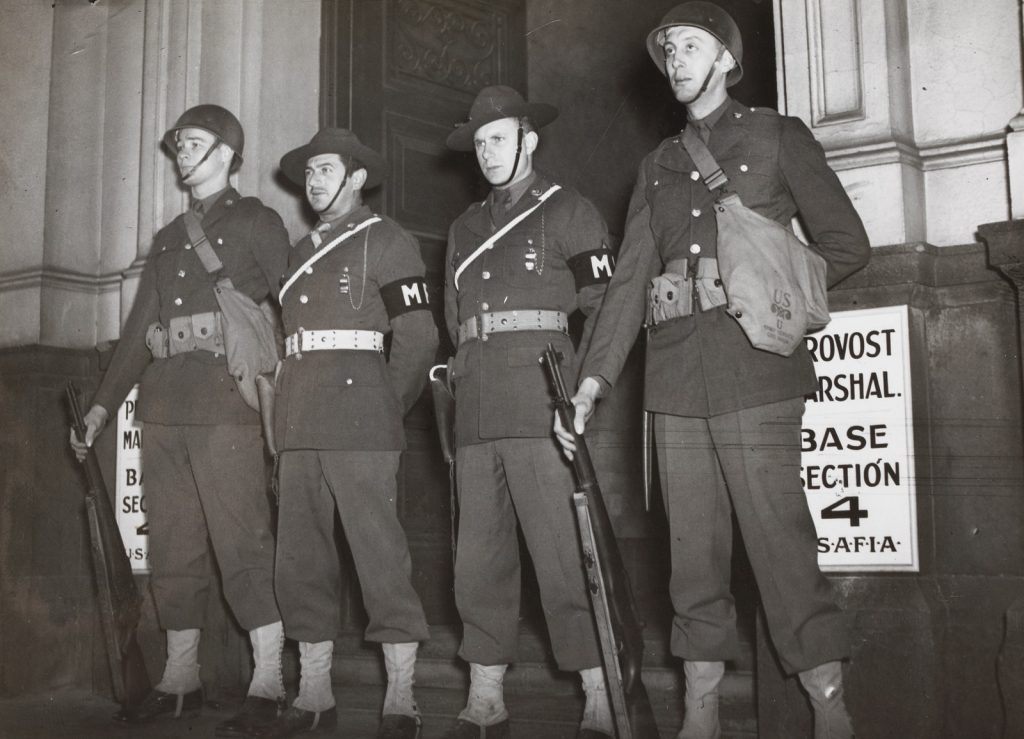
Leonski’s confession indicated that he had a fascination with his victim’s voices. He gave no explanation for his crimes, other than to say of one of his victims, ‘I wanted that voice. I choked her.’17 Though it became clear that Eddie was deeply psychologically disturbed – Army psychiatrists deemed him sane and fit to stand trial.18 Leonski was convicted on July 17 and sentenced to death by hanging at Pentridge Prison. He remains the first and only foreign citizen to have been tried and sentenced to death in Australia under the law of his own country.
The brownout lasted for 18 long months, finally lifting July 194319. The lights of Melbourne shone once more, as Victorians emerged to face a changed world.
More to explore
Further reading
- Definitive work by Kate Darian-Smith, On the home front: Melbourne in wartime, 1939-1945 (available as an ebook and in hardcopy)
- Ian Shaw, Murder at Dusk : How US soldier and smiling psychopath Eddie Leonski terrorised wartime Melbourne
- Peter Pierce, ‘Leonski, Edward Joseph (1917–1942)’, Australian Dictionary of Biography
- The National Archives of Australia (NAA) holds digitised transcripts of Leonski’s trial, including photographic evidence. You will find these documented on the Eddie Leonski Wikipedia page under ‘References – National Archives of Australia’. The list links to the digitised documents where they have been made available.
- Blackout: ABC of A.R.P, 1939-1945, Cinesound, courtesy of the Australian War Memorial; F01676. Instructional film
- Menzies Speech: Declaration of War (1939): https://aso.gov.au/titles/radio/menzies-speech-declaration-war/clip1/#
- Kate Darian-Smith, On the home front: Melbourne in wartime, 1939-1945,p.21
- Kate Darian-Smith, On the home front: Melbourne in wartime, 1939-1945, p.21
- Enacted in all coastal capital cities. Though the terms ‘blackout’ and ‘brownout’ were sometimes used interchangeably, a brownout was a less severe version of England’s wartime blackouts.
- Quoted from Kate Darian-Smith, On the home front: Melbourne in wartime, 1939-1945, p.112
- The Argus, 16 October 1943, p. 3.
- Kate Darian-Smith, On the home front: Melbourne in wartime, 1939-1945, p.22
- Kate Darian-Smith, On the home front: Melbourne in wartime, 1939-1945, p.22
- The Argus, 13 December, 1941, quoted from Kate Darian-Smith, On the home front: Melbourne in wartime, 1939-1945, p.22
- Kate Darian-Smith, On the home front: Melbourne in wartime, 1939-1945, p.20
- See Kate Darian-Smith, On the home front: Melbourne in wartime, 1939-1945
- Kate Darian-Smith, On the home front: Melbourne in wartime, 1939-1945, p.13
- Kate Darian-Smith, On the home front: Melbourne in wartime, 1939-1945, p.114. Listen to excerpts of Graeme Bell’s Swanston St Shamble and Two Day Jag (1944) via the National Film and Sound Archives. You can also tune into the Naxos Jazz Music Library, available from home for Victorian registered library members.
- Kate Darian-Smith, On the home front: Melbourne in wartime, 1939-1945, p.158
- Ian Shaw, Murder at Dusk : How US soldier and smiling psychopath Eddie Leonski terrorised wartime Melbourne, pp.34-35
- Peter Pierce, ‘Leonski, Edward Joseph (1917–1942)’, Australian Dictionary of Biography
- Ian Shaw, Murder at Dusk : How US soldier and smiling psychopath Eddie Leonski terrorised wartime Melbourne, pp.226-231; Kate Darian-Smith, On the home front: Melbourne in wartime, 1939-1945, p.159
- The Australasian, July 24 1943, p.3


Hello Kylie,
I was most interested to read about Eddie Leonski as I well remember my father talking to me about him when I was young. My Dad was in the Air Force during WW 11. He had a great interest in murderers in general and was curious to know what made them tick, and was always reading about them. He told once that he knew a lady who was going to go out with Leonski. Obviously she had no idea that he was the killer of those poor girls. However, at the last minute she declined his invitation. It probably saved her life! She said at the time there was something about him that put her off, (luckily).
That was a completely fascinating read, and wonderful photos, thank you so much for that!
Interesting story.
I enjoyed the Article too. I was researching the Melbourne Metropolitan Tramways Board Blackout :Brownout” I had been told my Father who was a Tram Driver during that time had a very important role. I hadn’t given it much thought until reading this article with a little of the hazards of the traffic. Now to research more about the MMTB Cricket teams.
Such an interesting article. I read with fascination and enjoyed the photos of times gone by.
Great article!
Please advise me, I understand that my father LESLIE EMANUEL ANDERSEN was involved with the ARP Melbourne after he returned from the Middle East in 1941 for medical reasons. Dad was a Captain in the AIF and served in Tobruk in the 2/24 th Battalion as Commander of B company during the siege until hi repatriation .
I believe he served with the ARP until VJ Day.
I would appreciate any information that you can give me.
Thanks…. David Andersen
Hello David, thank you for your query. I will log this with our Ask a Librarian service and someone will get back to you. With kind regards,
Kylie
Thank you for sharing with us. I liked it.